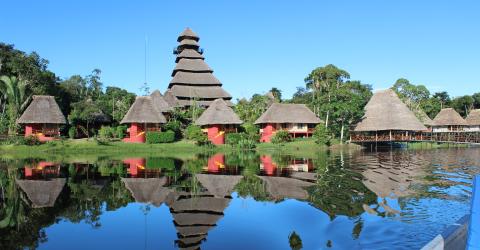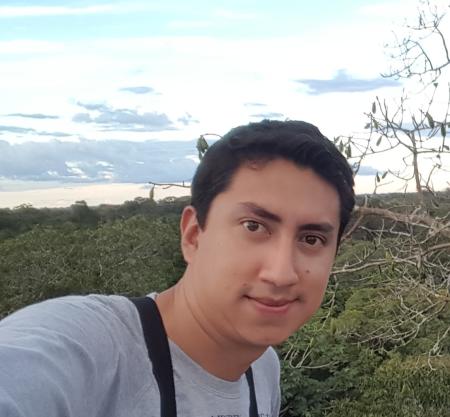
Añangu Lagoon, Ecuador - a wetland generating jobs though sustainable tourism
Within one of the most bio-diverse ecosystems in the world, the Yasuni National Park and UNESCO Biosphere Reserve, lies a community which believes that tourism is the best way to protect its ancestral land.
Twenty years ago, a group of members of the Añangu Kichwa community decided to start an ecotourism project at the shores of the lagoon where they live. They built the Napo Wildlife Center to give travellers the chance to visit their ancestral lands, but most importantly also to integrate conservation and economic activities in the region.
The community lives in an area of over 200 square kilometres within the Yasuni National Park. In this region of highly diverse flora and fauna the community decided to give up its legitimate right to hunt and fish, and thanks to this, nature has thrived here, in contrast to its depletion in other parts of the Amazon basin.
This community from the Amazon rainforest in Ecuador realised that ecotourism is an excellent alternative for local development, for improving the quality of life, for preserving traditional activities and most importantly for conserving nature.
The Kichwa Añangu community built the Napo Wildlife Center on the shores of the Añangucocha Lagoon. The hotel began operations in 2004, and in 2007 the community took full control of the lodge, the management and the administration. There are approximately 80 people working in this and other projects led by the community, involving a variety of activities in many areas.
Thanks to the Napo Wildlife Center and other ecotourism projects, the Kichwa Añangu community has a source of employment near their homes, and they are now in a process of continuous training aimed at improving the quality of life of the community. The income the community receives from tourist projects is always reinvested in productive social and cultural projects.
The Añangu community has made an effort to compile data on how their ancestors lived, how they hunted and fished, before the advent of gasoline and gunpowder. This information was obtained through research based on the memories of grandparents and parents who inhabited the banks of the Napo River. All this information is made available to tourists in the Kury Muyo (Interpretation Centre), one of the most interesting places to visit within the Napo Wildlife Center. Here, visitors are invited to join women of the community who show, through music, dancing and other forms, their ancestral traditions and way of life.
Sumak Kawsay is an ancient Quechua word that means “well-being”, a way of living in harmony within the communities and with nature. The Kichwa indigenous people have a deep sense of living in community: they use their resources to promote regeneration, and through this “sumak kawsay“ way of living, they are able to preserve and maintain their rich culture, traditions, identity and environment.

By Diego Escobar MSc.
Diego was born in the capital of Ecuador and has been involved in tourism from a very young age, from a naturalist guide to a governmental promoter of destinations inforeign tourism markets. He holds a master's degree in Tourism Management from Hebei Universityof China. He is currently the Coordinator of Marketing and Alliances of the Añangu Kichwa Community, in charge of promotion and implementation of quality processes within the organization.